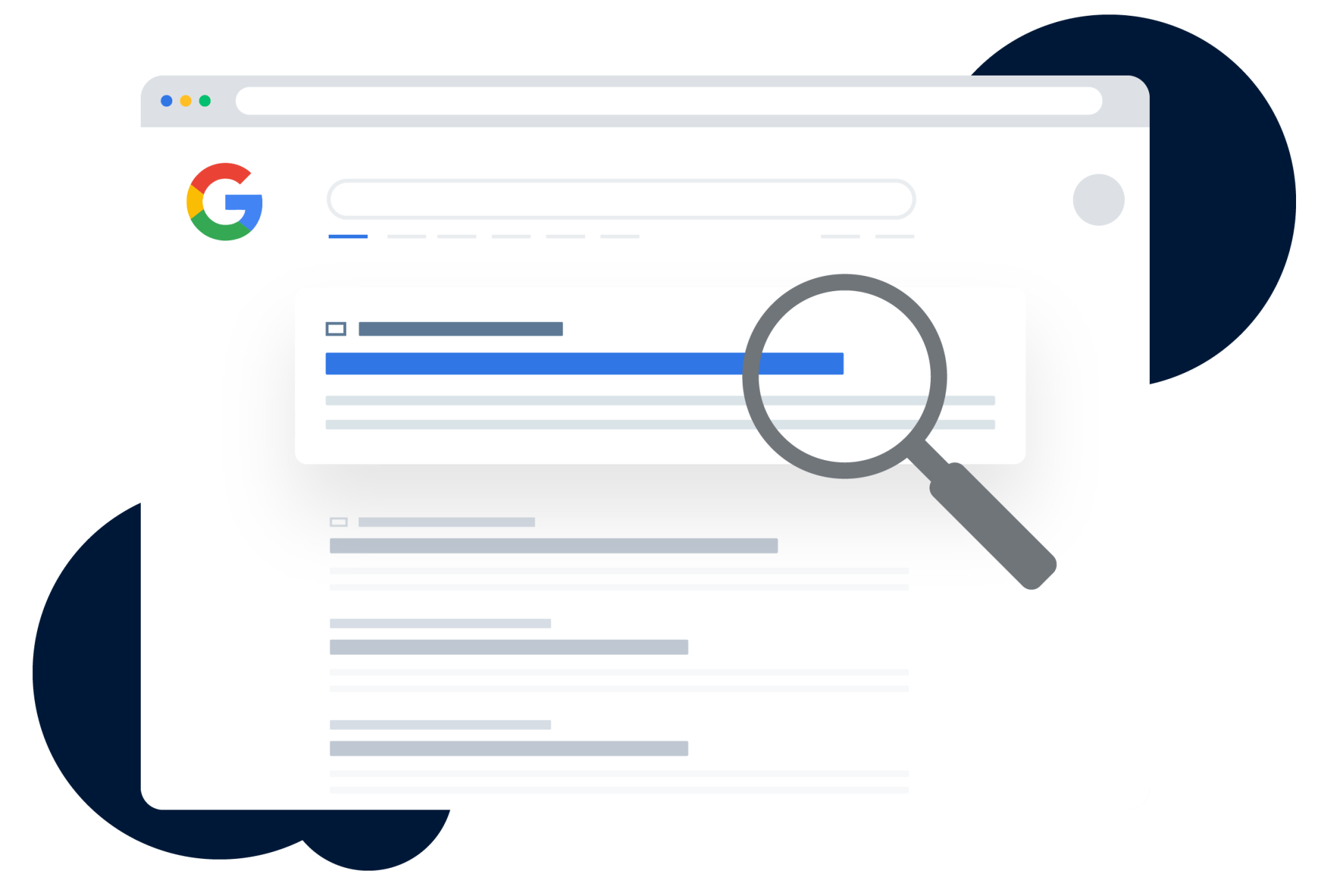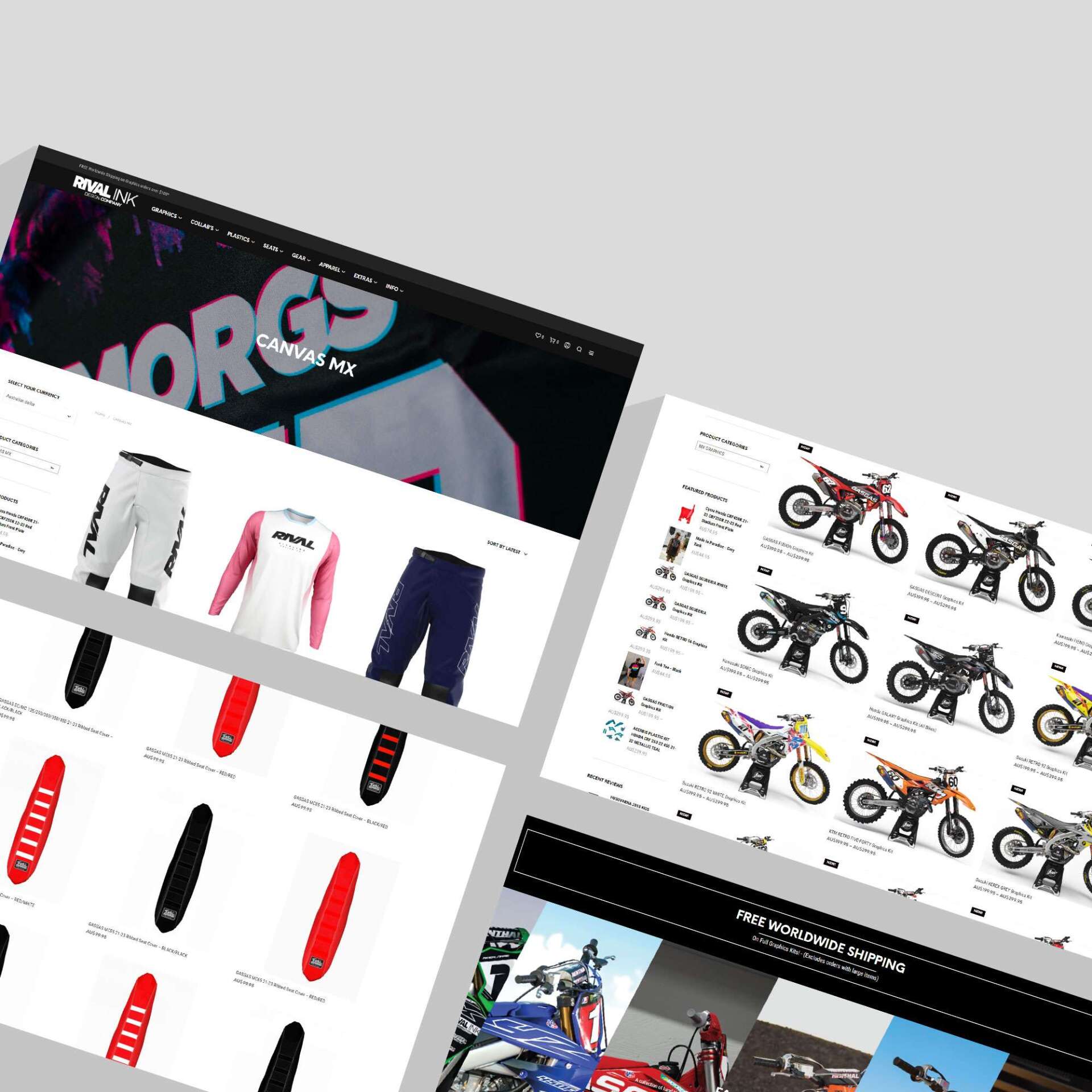Google Ads Shopping Campaigns Setup 101

Why Google Shopping Campaigns Are Essential for E-commerce Success

Google Ads shopping campaigns are a vital advertising format for any e-commerce business. They display your products directly in Google search results, complete with images, prices, and your store name, capturing the attention of high-intent shoppers at the critical moment of decision. Accounting for over 76% of retail search ad spend, their effectiveness is undisputed.
Unlike text-based ads, shopping campaigns are visual, using product data from your Google Merchant Centre account—not keywords—to appear across the Google Search, Shopping, Images, and partner sites. This visual-first approach leads to higher conversion rates, as shoppers can see exactly what they are clicking on before they visit your site. It allows you to attract qualified customers, secure multiple ad placements for a single search, and access detailed, retail-focused performance data.
Success with shopping campaigns hinges on three critical pillars: a solid foundational setup, intelligent campaign optimisation, and the use of advanced strategies for a competitive edge. Mastering these areas is the key to changing your ad spend into profitable growth.
I'm Kerry Anderson, and with over 15 years in digital marketing, I've guided businesses from startups to $200 million enterprises by leveraging strategic Google Ads shopping campaigns . My experience has consistently shown that a methodical, three-pronged approach is the only path to sustainable success.

Part 1: Building Your Foundation for Profitable Campaigns
Think of Google Ads shopping campaigns as your digital shopfront. A well-structured campaign showcases your products to motivated shoppers already searching on Google. However, success is not accidental; it begins with a rock-solid foundation. This foundation rests on understanding how these campaigns work, mastering your product data, and setting up your accounts correctly. Get these elements right, and you build the groundwork for consistently profitable sales.

Understanding Shopping Campaigns and Their Core Components
When a user searches for "wireless headphones," they see a gallery of products with images, prices, and store names. This is the power of Google Ads shopping campaigns . Unlike text ads that rely on keyword bidding, shopping campaigns pull data directly from your Google Merchant Centre account. Google's algorithms then match your products to relevant searches, showcasing them to people actively looking to buy.
The visual nature of these ads attracts more qualified traffic, which is why they dominate retail search spending. While text ads are great for services and display ads build brand awareness, shopping campaigns hit the sweet spot: they are visual like display ads but target high-intent shoppers like search ads. The Google Merchant Centre is the engine room for this entire process, housing all your product data, shipping, and tax settings. Without a properly configured Merchant Centre, your campaigns cannot run.
Your product feed is the lifeblood of this system. Key attributes include:
- Product Title: This is critical. Front-load important information like brand, product type, and key features (e.g., "BrandName Pro-Series Wireless Headphones Black Noise-Cancelling").
- Product Description: While not always visible in the ad, a detailed description helps Google's algorithm match your product to the right searches.
- High-Quality Images: Your primary image should be professional, clear, and on a white background. It is often the first thing a customer sees.
- GTINs and MPNs: These unique identifiers (like UPCs) help Google categorise your product correctly, improving visibility.
- Price and Availability: This data must be accurate and updated regularly to avoid product disapprovals and poor user experience.
This retail-focused approach aligns perfectly with our eCommerce SEO services , creating a comprehensive strategy that captures shoppers at every stage.
Step-by-Step Account and Feed Setup
Setting up your accounts is a foundational process that paves the way for future success. While it may seem technical, it can be broken down into clear steps.
- Create a Google Merchant Centre Account: Start by visiting Google's merchant centre setup page to create an account. You will need to provide basic business information and agree to the terms of service.
- Verify and Claim Your Website: This crucial security step confirms you own the website you are advertising. You can do this by adding a meta tag to your site, using Google Analytics, or other available methods.
- Configure Tax and Shipping: Accuracy is essential here. Your settings must reflect the actual tax and shipping costs your customers will pay, as this information is displayed in your ads.
- Create and Upload Your Product Feed: This is your product catalogue for Google. For small inventories, a manual upload via Google Sheets is feasible. For larger businesses, automated feed tools that connect to your e-commerce platform (like Shopify's Google & YouTube app) are essential for keeping data like price and stock levels current.
- Link Merchant Centre to Google Ads: The final step is to link your two accounts. This connection allows your approved products to be used in your shopping campaigns.
For a detailed walkthrough, Google's onboarding guide for Shopping ads is an excellent resource. At RankingCo, we have seen how a proper setup transforms campaign performance, which is why we emphasise these fundamentals in our Google Ads management services.
Part 2: Structuring and Optimising Your Google Ads Shopping Campaigns
With a solid foundation, the next step is to strategically structure and continuously optimise your Google Ads shopping campaigns . This is where we turn potential into profit by choosing the right campaign types, refining your product feed, and implementing intelligent bidding strategies to drive visibility, clicks, and conversions.

Why Google Shopping Campaigns Are So Effective
The core benefits of Google Ads shopping campaigns stem from their visual format. Users see the product, price, and brand before clicking, which pre-qualifies them and leads to higher quality leads and better conversion rates. This results in a more measurable ROI.
Shopping ads also provide increased visibility by appearing at the top of search results, often alongside text ads, giving you multiple opportunities to capture a user's attention. This broader presence extends across the Shopping tab, Google Images, YouTube, and the Display Network, ensuring your products reach customers wherever they are online. These benefits make shopping campaigns a cornerstone of our Google Ads Management services for businesses across Australia and beyond.
Choosing the Right Campaign Type
Google offers different shopping campaign types, each suited to specific goals. Understanding their differences is key to choosing the right one for your business.
| Feature | Standard Shopping Campaigns | Performance Max (PMax) Campaigns |
|---|---|---|
| Network Reach | Limited (Search, Shopping tab, Partners) | Broad (Search, Shopping, YouTube, Display, Gmail, Maps) |
| Bidding Control | More manual options (e.g., Manual CPC) | Primarily automated (e.g., Maximise Conversion Value) |
| Creative Automation | Limited (ads built from feed data) | High (assets combined automatically) |
| Targeting Options | Product groups, negative keywords, audiences | Goal-based, audience signals, AI-driven optimisation |
| AI/Machine Learning | Used for ad serving, some Smart Bidding | Core driver for optimisation, bidding, and creative |
Standard Shopping campaigns offer granular control over bids and targeting. They are excellent when you need precise control over spending and traffic, making them ideal for those who prefer hands-on management.
Performance Max (PMax) campaigns are Google's AI-driven solution, consolidating advertising across all Google channels from a single campaign. You set the conversion goals, and Google's machine learning optimises bids and delivery to achieve them. The trade-off is less manual control in exchange for broader reach and AI-powered efficiency.
Local Inventory Ads are a specialised format for businesses with physical stores. They promote products available for in-store purchase, driving foot traffic, and can be used within both Standard and PMax campaigns.
We often recommend Standard Shopping for businesses needing precise control, while PMax is the preferred choice for those seeking maximum reach and wanting to leverage Google's latest AI. For more details, Google provides comprehensive information About Shopping ads.
Mastering Product Feed Optimisation
Your product feed's quality directly correlates with ad performance. Optimising it is a continuous process, much like our ongoing Technical SEO services.
- Optimise Product Titles: Craft keyword-rich titles that mirror how customers search. Front-load the brand, product type, and key attributes.
- Use Detailed Descriptions: Keyword-rich descriptions help Google better understand your product and improve relevance for a wider range of queries.
- Use High-Resolution Images: Use clear, professional images on a plain white background. Additional images can show the product in context.
- Select Specific Google Product Categories: Choose the most granular and accurate category from Google's taxonomy to improve ad matching.
- Leverage Custom Labels: Use custom labels to segment products by profit margin, seasonality, or other business priorities for more strategic bidding.
- Ensure Data Accuracy: Prices, availability, and links must always be correct to avoid ad disapprovals and maintain customer trust.
Best Practices for Bidding and Budgeting
Effective bidding and budgeting are crucial for maximising your return on investment. Google's AI plays a significant role in modern campaign management.
Smart Bidding strategies like Target ROAS (Return On Ad Spend) and Maximise Conversion Value use machine learning to optimise bids in real-time to achieve your specific business goals. These automated strategies often outperform manual efforts once they have sufficient conversion data. For newer accounts, Manual CPC or Improved CPC (eCPC) can provide more control while gathering initial performance data.
The role of AI and machine learning is central to modern campaign optimisation. In PMax campaigns, AI drives everything from targeting to creative generation, allowing marketers to focus on high-level strategy. Daily budgets should be set based on your overall marketing goals, and campaign priority settings are essential when running multiple campaigns to prevent internal competition and ensure your budget is allocated effectively.
Part 3: Advanced Strategies and Troubleshooting
Once your Google Ads shopping campaigns are running smoothly, it's time to open up their full potential with advanced strategies and smart troubleshooting. This is where we move beyond the basics to implement sophisticated techniques that transform good campaigns into exceptional ones, giving you a significant competitive edge.

Leveraging Advanced Features for a Competitive Edge
In the crowded e-commerce landscape, standing out requires using every tool at your disposal. These advanced features are your secret weapons for maximising ad spend.
- Dynamic Remarketing: This powerful tool re-engages past website visitors by showing them ads for the exact products they viewed. It is a highly effective way to bring interested shoppers back to complete a purchase, often leading to a dramatic increase in conversion rates.
- Product Reviews and Seller Ratings: Those golden stars in your ads build instant trust and social proof. To enable them, you need to collect reviews through a Google-approved third-party platform and submit a product ratings interest form. The effort is well worth the boost in click-through rates.
- Promotions and Special Offers: Annotations like "Special offer" or "PRICE DROP" create urgency and make your ads stand out. Google has specific rules to ensure these promotions reflect genuine savings for the customer.
- Customer Match and Similar Audiences: Upload your customer email lists to re-engage past purchasers or exclude them from certain campaigns. Google can then build Similar Audiences to find new prospects who share characteristics with your best customers, expanding your reach efficiently.
- Negative Keywords: While shopping campaigns don't use keywords for targeting, negative keywords are crucial for preventing wasted spend. Add terms like "used," "refurbished," or "free" to stop your ads from showing to irrelevant searchers.
These advanced strategies are integral to our approach for getting more traffic and optimising performance for our clients worldwide.
Common Challenges and How to Resolve Them
Even well-planned campaigns can encounter issues. The key is to identify and resolve them quickly to maintain performance.
- Product Disapprovals: These are common and usually caused by issues like incorrect GTINs, price mismatches, or policy violations. Google Merchant Centre's diagnostics tab will tell you exactly what to fix in your product feed.
- Low Impression Share: If your ads are not showing often, it could be due to a limited budget, low bids, or poor product data quality. Consider increasing your budget, raising bids on profitable products, or optimising your product titles for better relevance.
- Unprofitable Products: Not every product will be a winner. Regularly analyse your performance data to identify and exclude underperforming items, or move them to a lower-priority campaign to stop them from draining your budget.
- Inaccurate Conversion Tracking: Without accurate tracking, you cannot optimise effectively. Ensure your Google Ads conversion tracking is set up correctly to provide reliable data for Smart Bidding and performance analysis.
- Policy Violations: These are the most serious issues and can lead to account suspension. Stay current with Google's advertising policies and conduct regular audits to ensure your campaigns remain compliant.
By systematically addressing these challenges, we maintain the health and profitability of your Google Ads shopping campaigns , turning potential obstacles into opportunities for optimisation.
Frequently Asked Questions about Google Shopping Campaigns
When considering Google Ads shopping campaigns , businesses often have questions about cost, effectiveness, and how they compare to other ad formats. Here are straightforward answers to the most common queries, based on our extensive experience managing campaigns for businesses of all sizes.
How much do Google Shopping ads cost?
Google Ads shopping campaigns use a cost-per-click (CPC) model, meaning you only pay when someone clicks on your ad. The actual CPC varies based on several factors:
- Industry Competition: Highly competitive sectors like fashion or electronics generally have higher CPCs than niche markets.
- Product Price: Higher-priced items can often sustain higher bids and may have higher CPCs.
- Bidding Strategy: Your chosen strategy, whether manual or automated (like Target ROAS), directly impacts your costs and returns.
Instead of focusing only on the lowest CPC, the goal should be to achieve the highest return on ad spend (ROAS). A well-optimised campaign focuses on delivering value with every click, not just minimising cost.
What is the difference between Google Search ads and Shopping ads?
The primary differences lie in their format, targeting mechanism, and the user intent they capture.
- Format: Search ads are text-based, relying on compelling copy. Shopping ads are visual, showing a product image, price, and title directly in the search results.
- Targeting: Search ads are triggered by keyword bidding. Shopping ads are matched to user queries based on the product data you provide in your Google Merchant Centre feed.
- User Intent: While both target users with commercial intent, shopping ad clickers are often further along in the buying journey. They have already seen the product and its price, meaning their click signifies a more qualified interest in making a purchase. This is why shopping ads frequently yield higher conversion rates.
What are the main benefits of Performance Max over Standard Shopping?
Performance Max (PMax) is Google's latest campaign type, offering significant advantages over Standard Shopping, especially for businesses seeking broad reach and AI-driven efficiency.
- Broader Channel Access: PMax campaigns run across Google's entire ecosystem—Search, Shopping, YouTube, Display, Gmail, and Maps. Standard campaigns are more limited, primarily appearing on Search and the Shopping tab.
- AI-Driven Optimisation: PMax is built on Google's most advanced machine learning. It automates bidding, targeting, and ad placement to maximise your conversion goals, reducing manual workload and often uncovering new opportunities.
- Automated Creative Assets: You provide a range of assets (images, videos, headlines), and PMax automatically combines them into optimised ads for different channels. This saves time and ensures your ads are always in the most effective format.
While Standard Shopping offers more granular manual control, PMax excels at scale and efficiency. It is an excellent choice for businesses looking to leverage Google's full network and AI capabilities to drive overall growth, making it ideal for companies expanding into new markets.
Partner with a Team That Understands Your Goals
We have explored the three pillars of successful Google Ads shopping campaigns : building a solid foundation, strategically optimising campaigns, and leveraging advanced features while troubleshooting proactively. Mastering these elements in an increasingly sophisticated advertising landscape requires deep expertise and cutting-edge technology. This is where the value of a Google Premier Partner becomes clear.
At RankingCo, we pride ourselves on being "the world's best little digital agency." We are agile enough to provide personalised attention yet sophisticated enough to manage complex, global campaigns. From our Brisbane, QLD headquarters , we help businesses across Australia, New Zealand, the US, and Canada not just compete, but dominate their markets.
Our expertise is particularly valuable for startups and scaling businesses with international ambitions. We integrate advanced AI technologies to analyse market trends and optimise your campaigns in real-time, ensuring you stay ahead of the curve.
What truly sets us apart is our comprehensive, full-funnel approach . Your Google Ads shopping campaigns do not operate in a vacuum. We ensure they work in harmony with your entire digital ecosystem, including eCommerce SEO , Technical SEO , and your broader Google Ads Management strategy, to maximise your return on investment.
Working with us is like having an in-house team of experts with the breadth of experience that only comes from managing campaigns across diverse industries and geographies. We understand your business goals, your customers, and the competitive landscape you operate in. We are a partner who genuinely cares about your success.
Ready to transform your e-commerce presence and take your brand to new heights? Let's discuss how our proven strategies and AI-driven approach can deliver the results your business deserves. Get expert help with your Google Ads campaigns or contact us today to start your journey towards e-commerce excellence.














